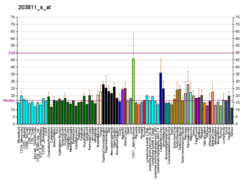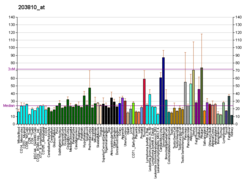| DNAJB4 | |||||||||||||||||||||||||||||||||||||||||||||||||||
|---|---|---|---|---|---|---|---|---|---|---|---|---|---|---|---|---|---|---|---|---|---|---|---|---|---|---|---|---|---|---|---|---|---|---|---|---|---|---|---|---|---|---|---|---|---|---|---|---|---|---|---|
| Identifiers | |||||||||||||||||||||||||||||||||||||||||||||||||||
| Aliases | DNAJB4 , DNAJW, DjB4, HLJ1, DnaJ heat shock protein family (Hsp40) member B4 | ||||||||||||||||||||||||||||||||||||||||||||||||||
| External IDs | OMIM: 611327; MGI: 1914285; HomoloGene: 100610; GeneCards: DNAJB4; OMA:DNAJB4 - orthologs | ||||||||||||||||||||||||||||||||||||||||||||||||||
| |||||||||||||||||||||||||||||||||||||||||||||||||||
| |||||||||||||||||||||||||||||||||||||||||||||||||||
| |||||||||||||||||||||||||||||||||||||||||||||||||||
| |||||||||||||||||||||||||||||||||||||||||||||||||||
| |||||||||||||||||||||||||||||||||||||||||||||||||||
| Wikidata | |||||||||||||||||||||||||||||||||||||||||||||||||||
| |||||||||||||||||||||||||||||||||||||||||||||||||||
DnaJ homolog subfamily B member 4 is a protein that in humans is encoded by the DNAJB4 gene. [5] [6] [7]





